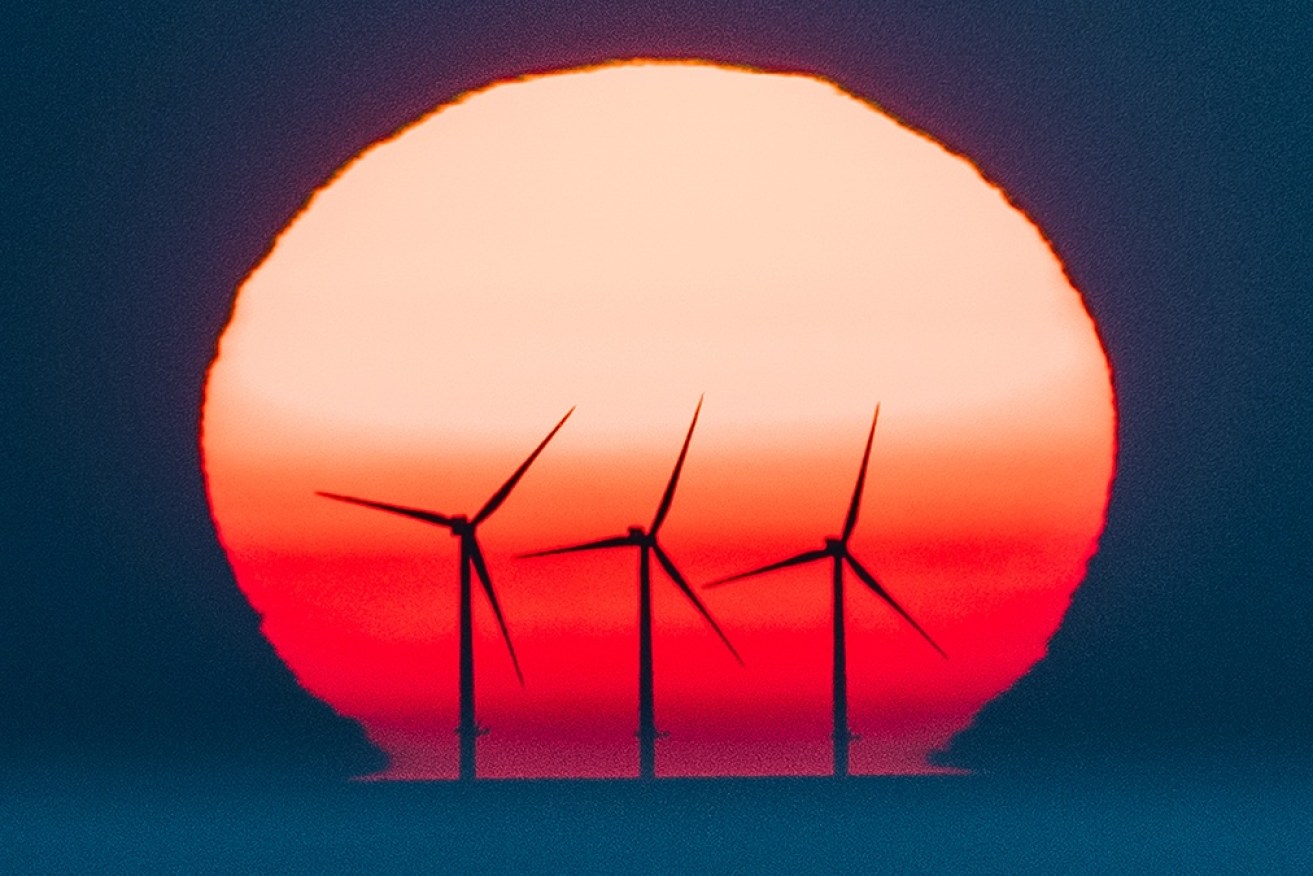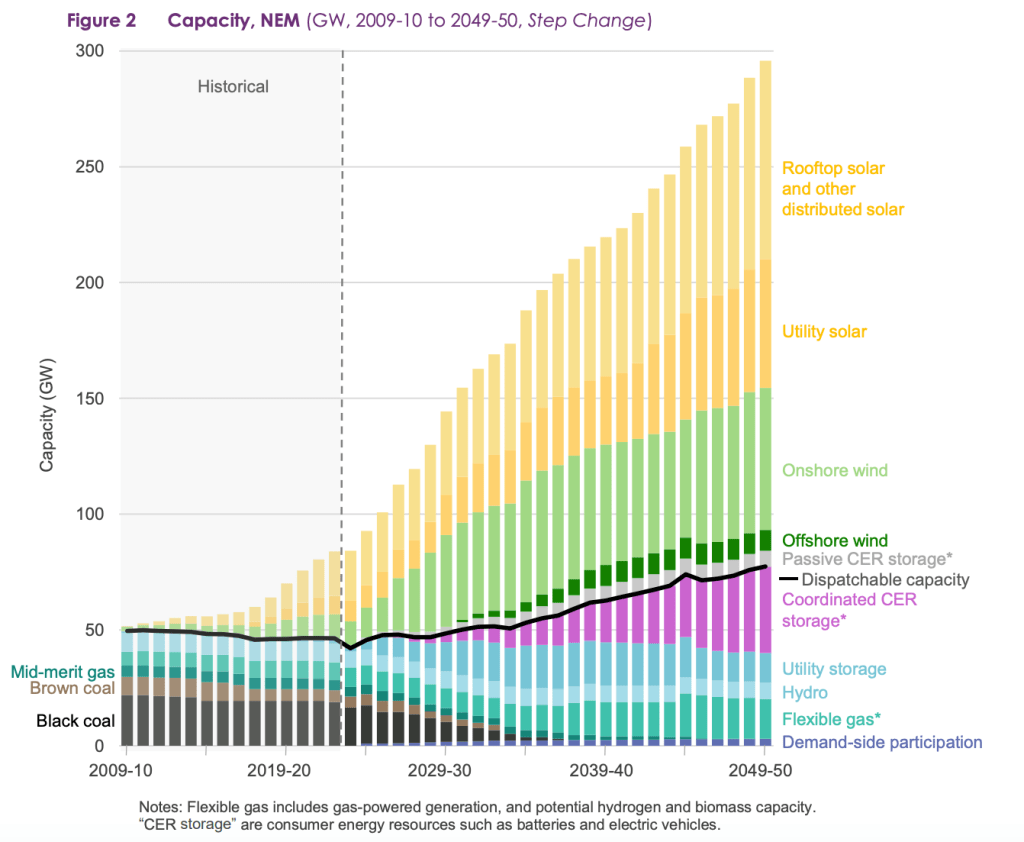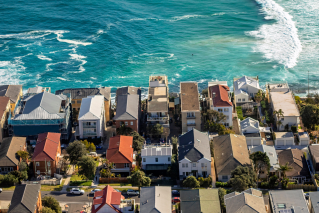AEMO: Switch to renewables needs huge and fast grid expansion


AEMO predicts massive grid investments in its latest energy planning. Photo: TND
Australians face higher costs and the nation will struggle to achieve emission targets unless the power grid is transformed to cope with the shift from coal to renewables, leading experts warn.
Planning published on Friday by the Australian Energy Market Operator (AEMO) predicted that Australia will move away from fossil fuels sooner than expected as households electrify faster.
Adding about 10,000 kilometres in transmission lines is needed to allow the grid to cope with three-times more renewable power by 2030 and a seven-fold rise by 2050, AEMO predicted.
Grattan Institute energy program director Tony Wood calls it a “hell of a challenge” that will likely need to become even more ambitious as Australia’s climate targets ratchet up in coming years.
He warned consumers could face higher costs as a result, though the cost of inaction is likely much more significant, with AEMO presenting what it believes to be the lowest-cost pathway.
“It can be done, but it requires a lot more serious effort,” Wood said.
“I’ll be very pleasantly surprised if we get to 82 per cent [renewable energy generation] by 2030.
“If we got to 72 per cent that would still be an enormous change.”
Closing coal faster
AEMO’s integrated systems plan (ISP) predicts 90 per cent of Australia’s coal generation will retire over the coming decade, replaced mostly by renewables.
But demand is also skyrocketing as the nation electrifies to reduce our carbon footprints and will more than have doubled by 2050, according to the latest forecasts published by the regulator.
There are major challenges in ensuring the increasingly renewables-reliant grid can meet that higher demand, such as expanding transmission lines and bringing renewable projects online.
Unfortunately, there’s already been what Victoria University Professor Bruce Mountain describes as a “great stagnation” in large wind and solar entering the market, which could derail the plans.
“Unless this changes and very great levels of transmission expansion is [also] achieved, coal power stations will not be able to close to the schedule that AEMO predicts,” Mountain said.
It’s a big problem because, as Wood explained, the current timeline for coal power station closures reflects Australia’s emissions reduction targets (a 43 per cent reduction by 2030).
That’s before even accounting for 2035 targets which Wood said will be “more stringent”.

Source: AEMO (click to enlarge).
Wood said the biggest challenge will be building out Australia’s transmission infrastructure, which will require vast amounts of materials and labour investment over the coming decades.
“The challenges in building transmission are really tough,” he said.
“It’s the availability of labour and materials, which adds to costs, and then regulatory planning.”
Transmission projects in AEMO’s optimal pathway will incur annualised costs of more than $16 billion, but the regulator said the plan avoids more than $17 billion in costs without any action.
Wood said estimates of the costs of transmission have risen 30 per cent in the past year, and this had eroded projected benefits because consumers will likely face higher costs than otherwise.
Households’ potential
The silver lining is that Australians are adopting small-scale renewable energy at a break-neck pace, which will help temper electricity demand as the nation moves away from fossil fuels.
In fact, rooftop solar contributed more to the grid in the first quarter of 2023 (12.1 per cent) than grid-scale solar, wind, hydro or gas, AEMO said on Friday.
The graph above shows what Wood described as the “huge” role rooftop solar will play in the energy transition, though relying on households for renewables also has some key challenges.
“In this document the ISP talks about them as being effectively a huge power plant,” Wood said.
“I’m not sure a lot of the homeowners are going to want their assets to be used as a virtual power plants – there’s a long way to go on that side.”
There’s also the challenge that existing investment in household batteries is not adequate to absorb the large amounts of rooftop solar generated during the middle of the day.
Tariff reform that would incentivise households to invest in batteries so they could sell their power back to the grid in the evening would help, but Wood said progress there is “limited”.








